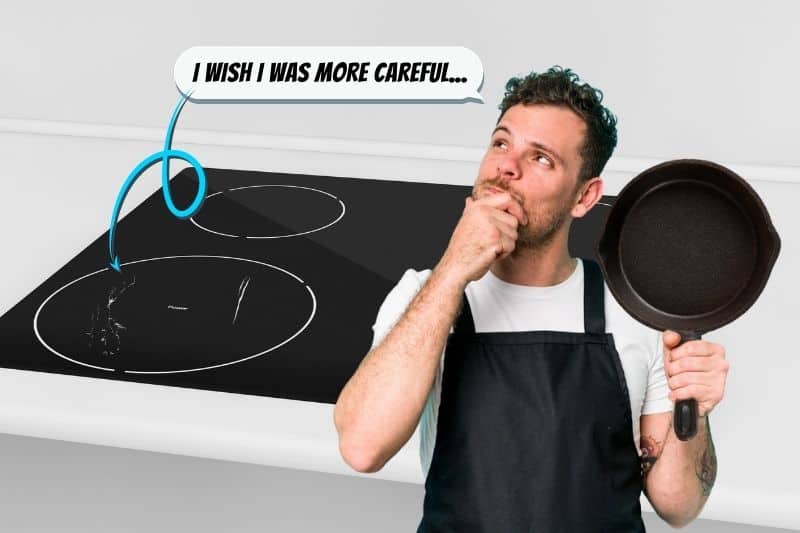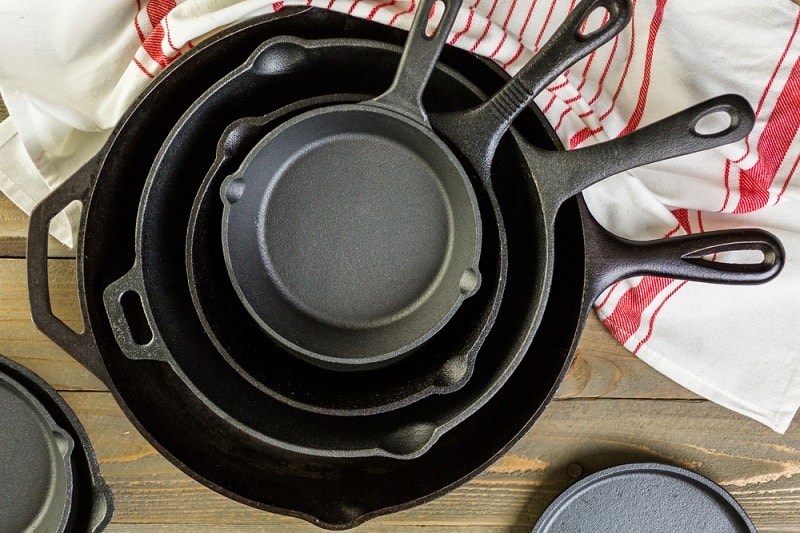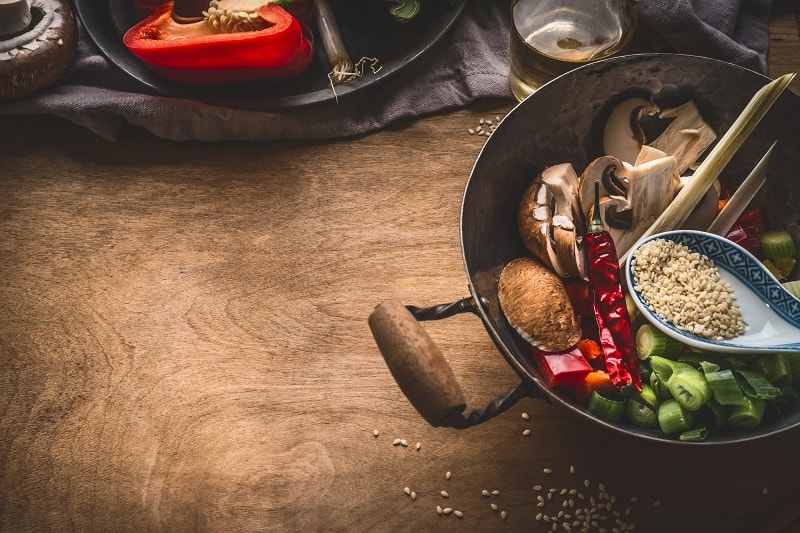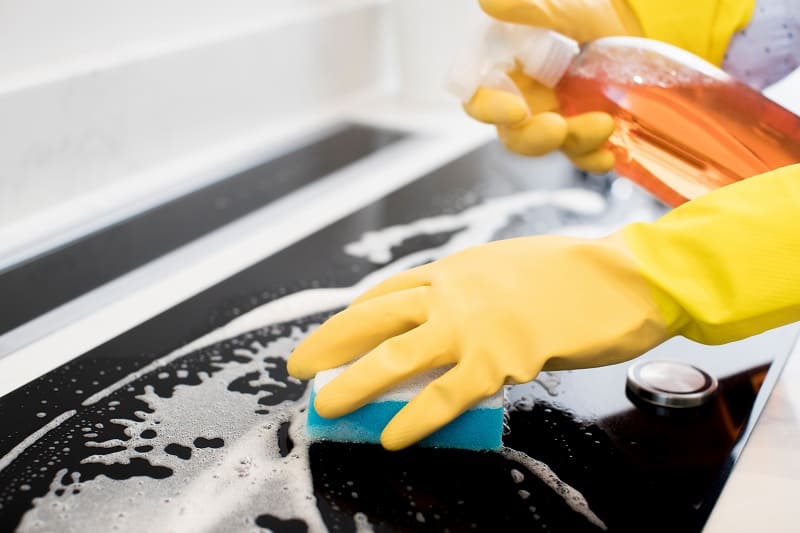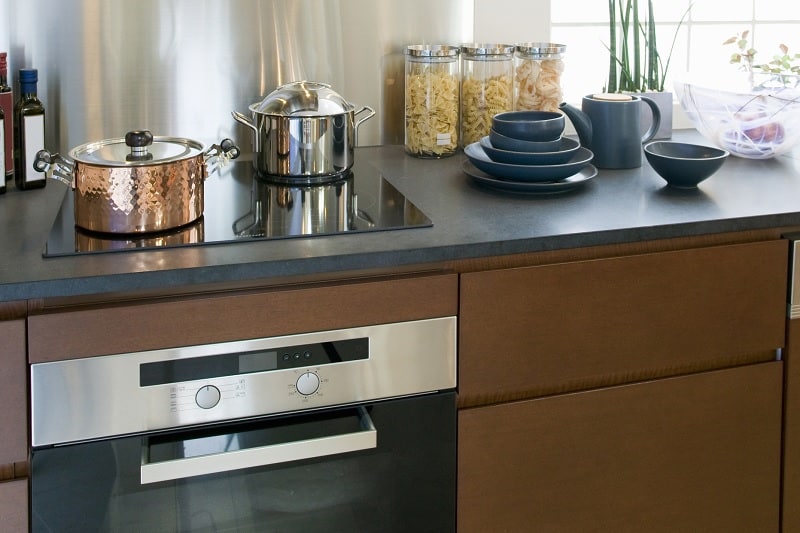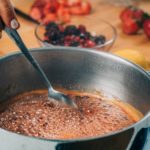There is a place for cast iron cookware in every home and commercial kitchen. It is one of the only types of cookware that improves with age!
They can develop a non-stick coating with regular use and are designed to last a lifetime.
Cast iron pots and pans are also great at maintaining heat and are the perfect tool for searing juicy steaks and browning meat.
They can also work on induction hobs that are found in many modern kitchens. The pans are heavy and draw in the electromagnetic current required for induction cooktops to function.
It seems like a perfect cooking combination, right?
But unfortunately, cast iron pans will scratch your new and likely expensive induction hob if you’re not careful.
Why Do Cast Iron Pans Scratch Induction Hobs?
You might be wondering why cast iron pans scratch induction cooktops when other cookware doesn’t. This is because iron is a naturally rough metal, and induction stoves are made from glass which scratches easily.
The added weight of cast iron pans further contributes to the damage. The more weight in the pan, the greater the friction between your cookware and your cooktop.
How to Protect an Induction Cooktop from Cast Iron
Scratching the surface of your induction cooktop is the only real disadvantage of using cast iron pots and pans.
Yet with a few preventive measures, you can remove this disadvantage entirely; you can keep your induction stove looking as good as new while reaping the rewards of using cast iron cookware.
Use the tips outlined below for the least damage possible.
1. Don’t slide the pan
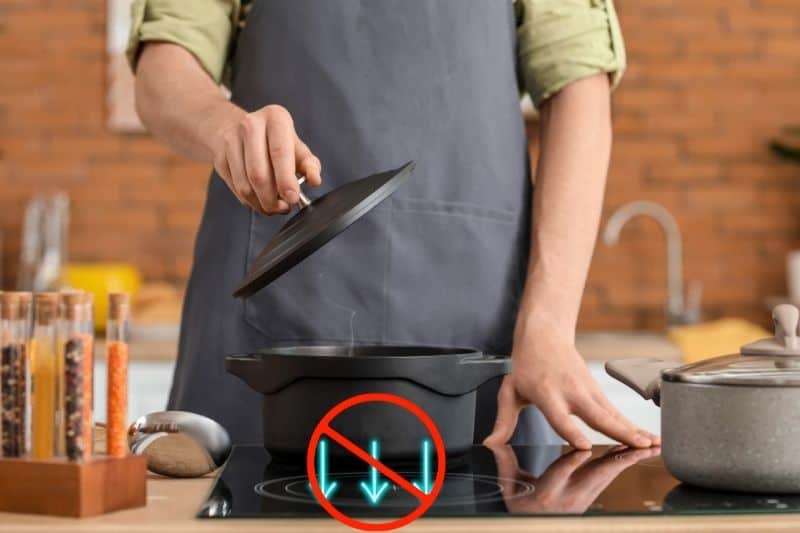
It can be tempting to move your pan around on the stove as you cook. However, the best way to avoid scratches is to keep your cast iron pan as still as possible.
Place the pan on the ring of your induction hob in one swift movement and don’t move it until you’re finished cooking.
2. Separate with paper towels
Putting paper towels between a pan and a heat source sounds like a kitchen disaster waiting to happen.
But unlike conventional stoves, induction hobs do not generate heat. Instead, the cookware you are using is heated directly by using energy from an electromagnetic field.
Therefore, a great way to prevent your induction cooktop from getting damaged is to slide a paper towel under the pan.
This will not get in the way of cooking or supplying heat to the pan whatsoever, but it will help to avoid scratches as it provides a smooth surface.
If you do then move your pan accidentally when cooking, it won’t cause half as much damage.
3. Smooth the base of the pan
You can achieve the same effect as you get from the paper towel method by smoothing the base of your cast iron pan using an iron file.
Smoothing away the natural ridges and bumps within the metal ensures the pan won’t cause as much damage to your cooktop.
However, remember that cast iron is naturally rough and no amount of filing will make it completely smooth.
4. Choose enamel cast iron cookware
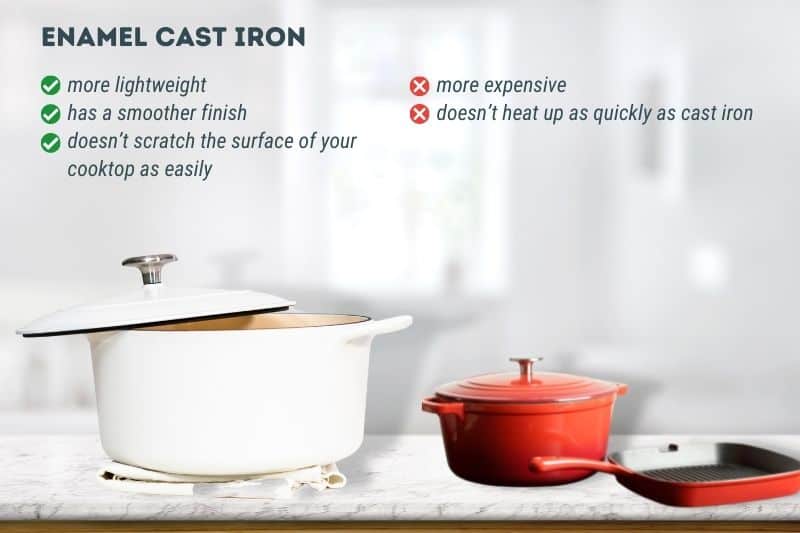
Enamel cast iron cookware is a great alternative to traditional iron cookware if you have an induction stove.
It is more lightweight and thus doesn’t scratch the surface of your cooktop as easily. As the iron is coated in a layer of enamel, it also has a smoother finish.
Bear in mind that there are several differences aside from weight and texture between these two types of pans.
Firstly, enamel cookware is more expensive and not a great option for anyone on a budget.
It also doesn’t heat up as quickly as cast iron cookware, but can help with a more even distribution of heat.
Think about what you will be cooking in your pans to help you make the right choice for your kitchen.
5. Clean your cookware and hob

It is the rough texture of cast iron itself that makes these pans more likely to scratch the glass surface of your induction cooktop.
With that said, food and other debris both on the bottom of your cookware and on your stove can contribute to the problem.
Thankfully, there is an easy fix for this: clean both your cookware and your stove before cooking. You don’t need to do a thorough clean. Simply wiping both surfaces with a damp cloth will do the job.
Get into the habit of doing this before and after cooking and you will minimise the damage to your new stove. You should also give your cooktop a deeper clean once per week to keep it in good condition.
What Does Not Work on an Induction Stove?
If this all sounds like too much trouble, you might be wondering what other pans you can use on an induction hob.
For the electromagnetic heating mechanism to work, you have to use pans made from a magnetic-based metal, which is why cast iron is a great choice.
You can easily test whether your current cookware is magnetic by holding a magnet up to the base and seeing if it sticks to the surface.
Aluminium, copper, and glass cookware generally don’t work. However, sometimes these pans have an induction plate made from a magnetised metal built into the base, so it is worth running the test to double-check before rushing out to purchase new cookware.

Hannah is a freelance content writer and self-proclaimed foodie. When Hannah isn’t sitting tapping at her laptop, you’ll probably find her in the kitchen. As an ex-chalet host, she’s used to cooking four-course meals for 10+ people and loves feeding friends and family whenever possible.

